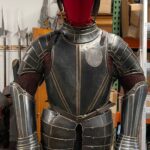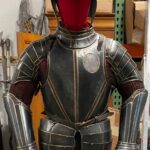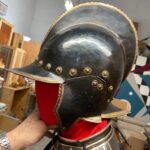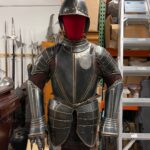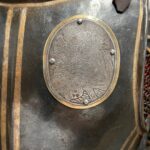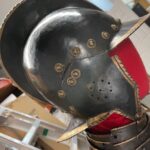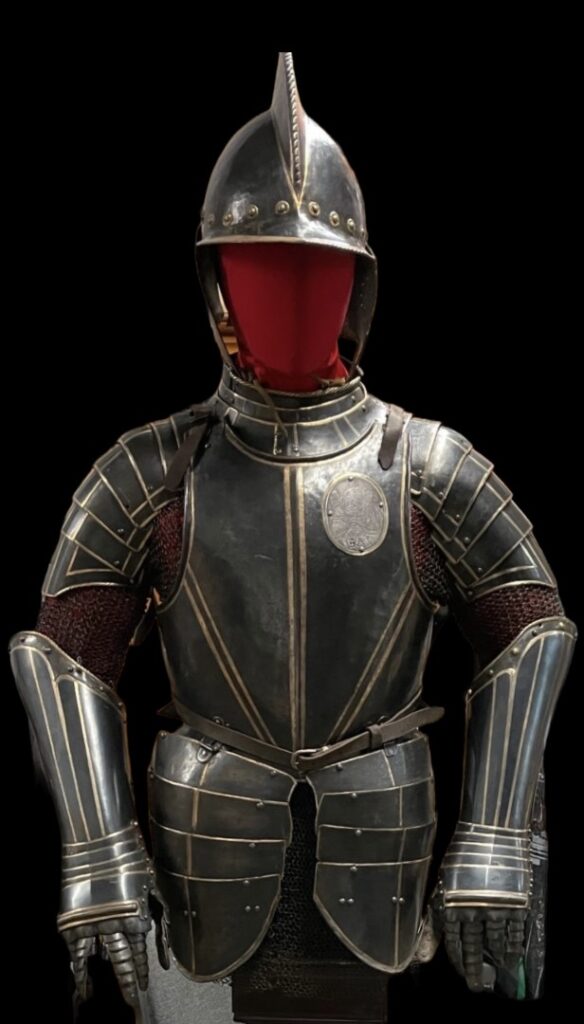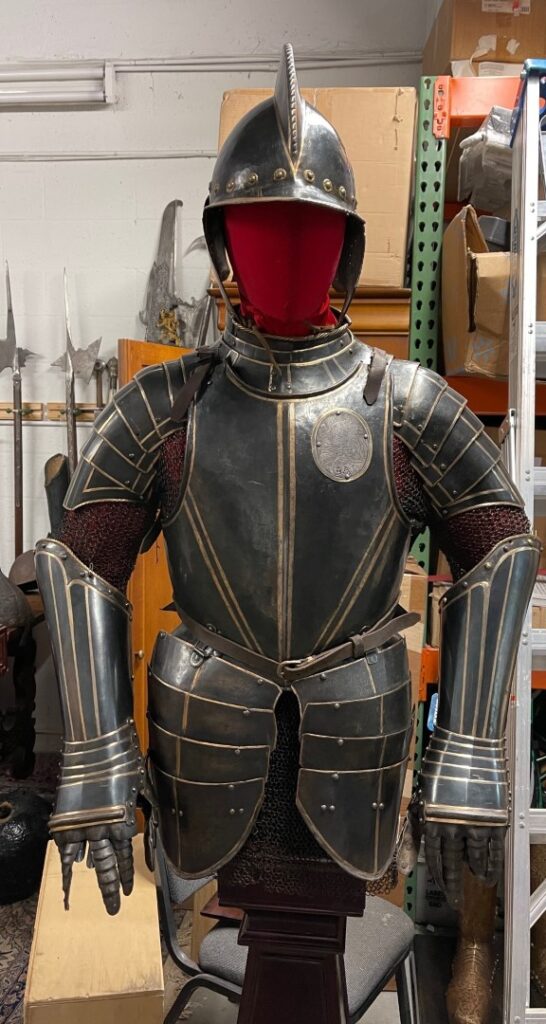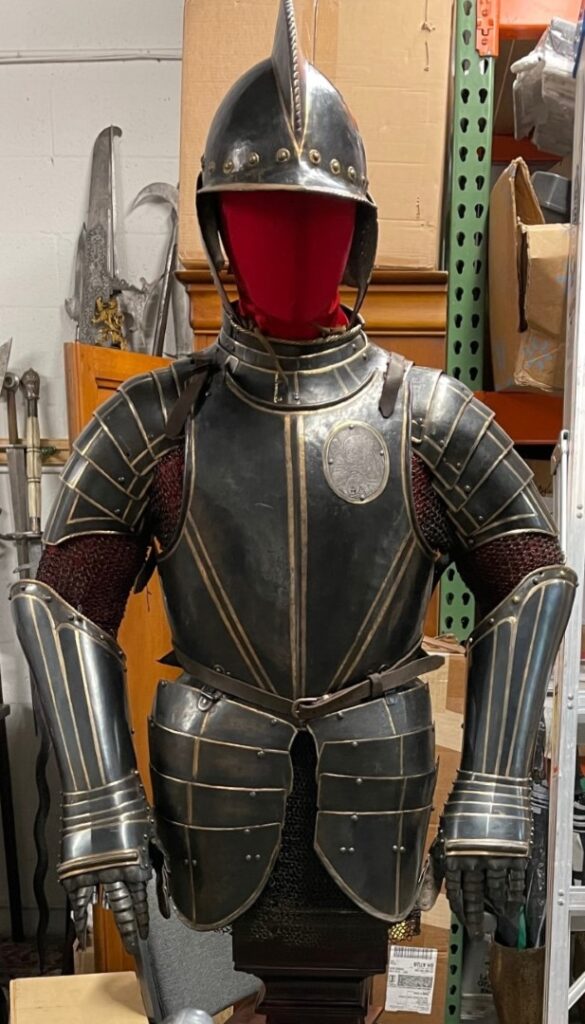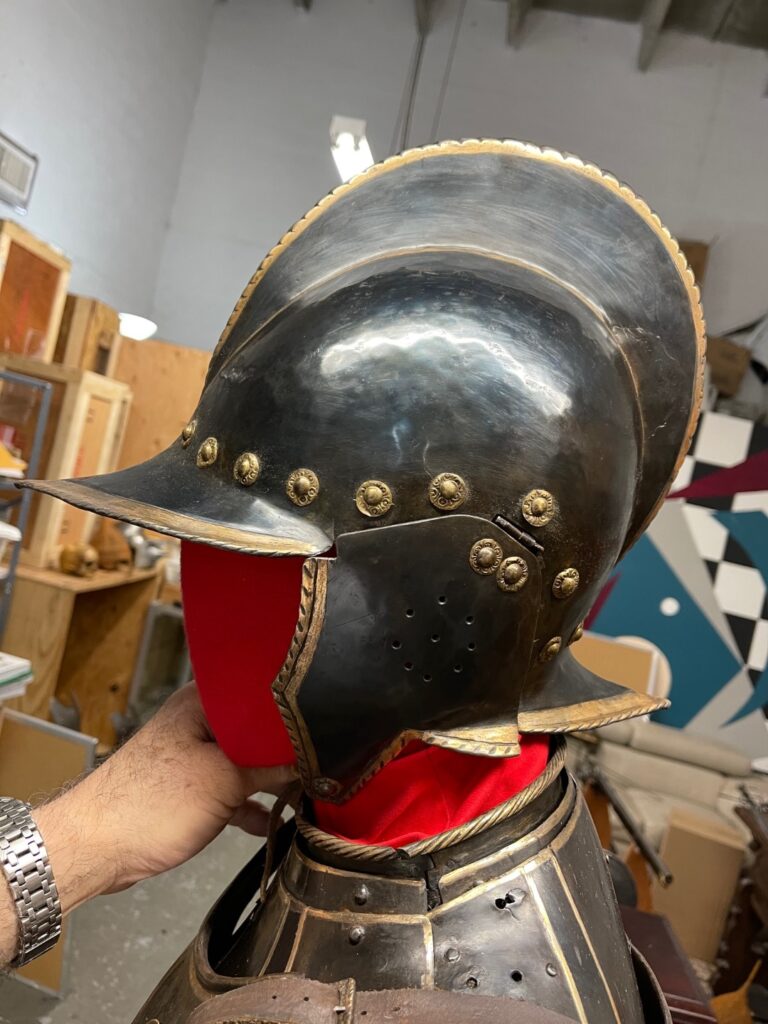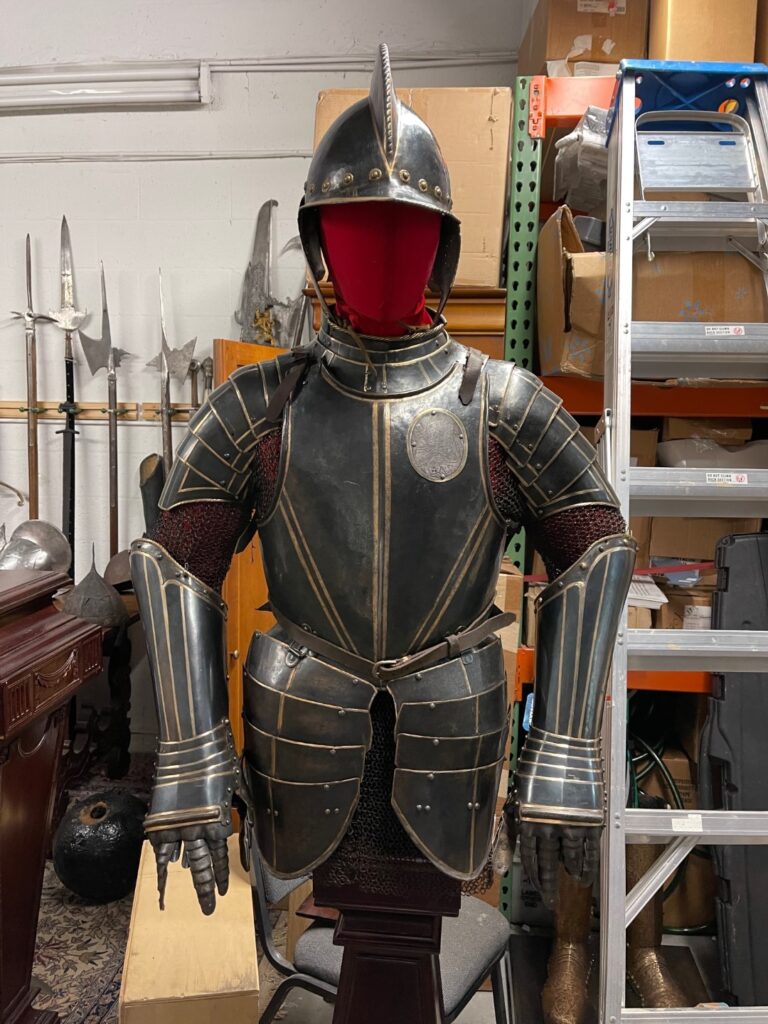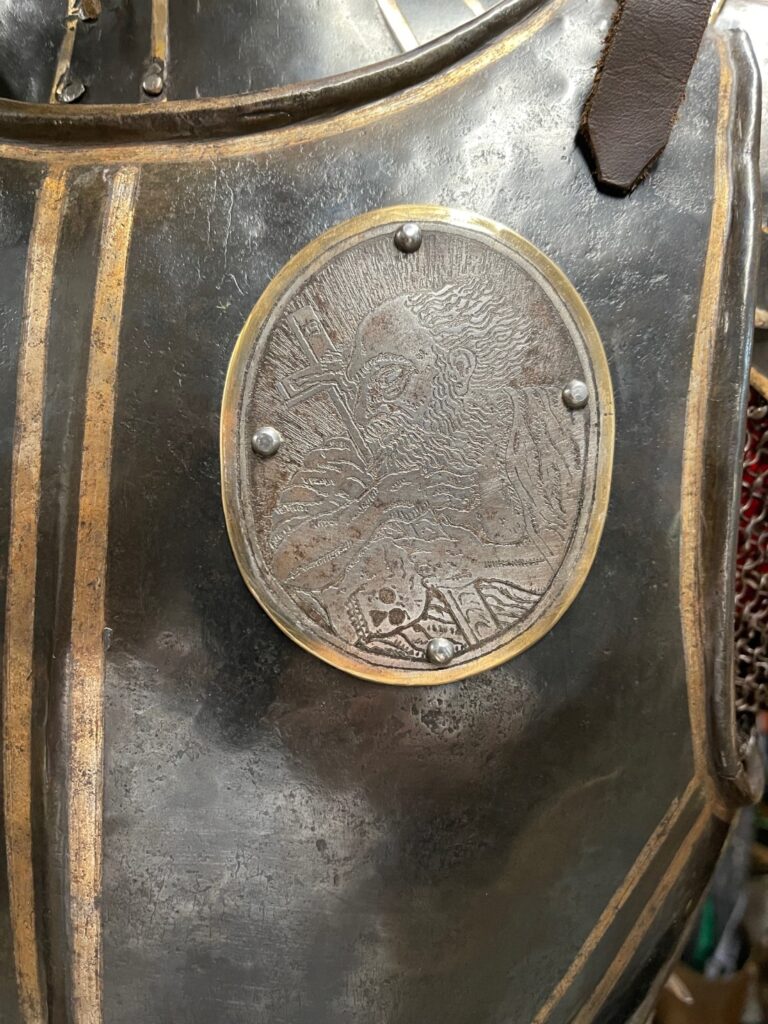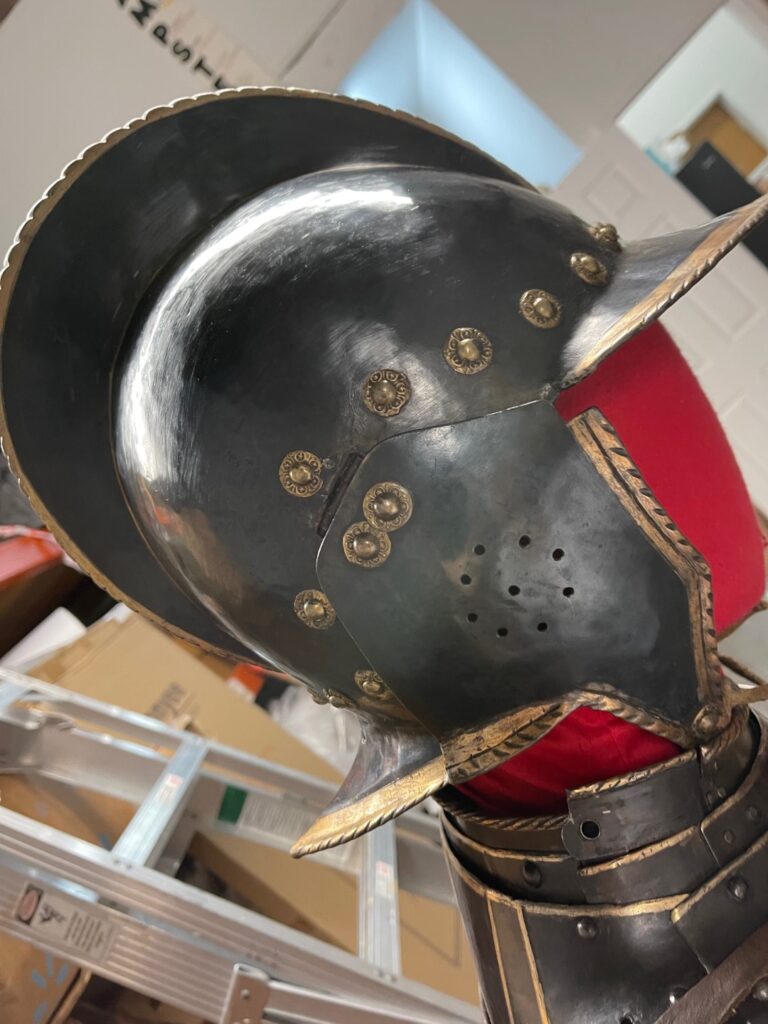1820) A NEARLY HOMOGENEOUS BLUE AND GILDED HALF-ARMOR CIRCA 1590 PROVENANCE SIGMARINGEN CASTLE: This armor would look exceptional in any museum or private collection of exceptional taste.
Discussion: This finely decorated armor is almost certainly worn by a high-ranking officer or perhaps a wealthy person. The decline of armor began around the middle of the 16th century. Protective defensive armor came to a screeching end around 1640. Most attribute this to the invention of the gun, which became much more common on the battlefield toward the end of the 16th century. After 1550, the quality of gunpowder reached such a high level that it now gave gunsmiths an advantage over armorers.
Description: Constructed with a rounded skull joined along the crest with an exceptionally high-file decorated, roped medial comb, which projects forward at the brow to a broad, acutely pointed integral visor-shaped peak and rearwards at the nape to a matching, integrally constructed neck guard. It is fitted at each side with a hinged cheekpiece and flanging outwards at the rear of its lower edge to serve as a continuation of the neck guard. The main edges of the helmet are formed with notched inward turns, and its surfaces, a gorget of two lames, front and rear; a breastplate formed in the peascod fashion, fitted at its arm openings with fixed gussets and flanged outward at its lower edge to receive a fauld of one lame carrying a tasset, the left of four lames and the right of four lames; a one-piece backplate with broad, shallow neck opening and flanged lower edge to accommodate a culet; two large, somewhat square pauldrons, each formed of seven lames, The gauntlets have fingers attached by rivets. The thumb was attached with a hinge. However, from 1600 to 1620, some Italian variants were attached by a sliding rivet. The metacarpal (back of the hand) was composed of lames followed by a long cuff that flared outward at the opening.
Conclusion: Priced to sell quickly. This armor is much more impressive in person than in pictures. ACT-KNOW, this one will sell fast!!!*


